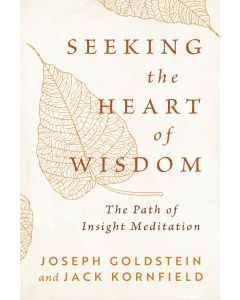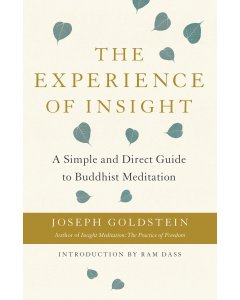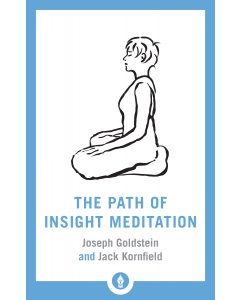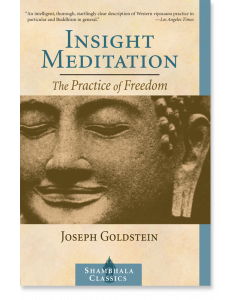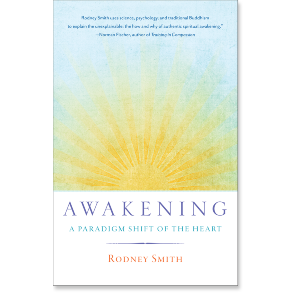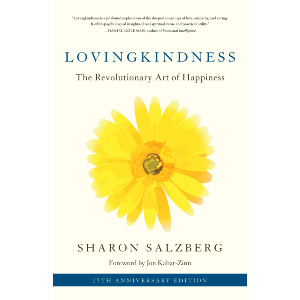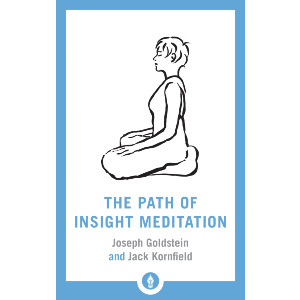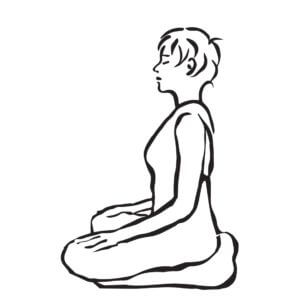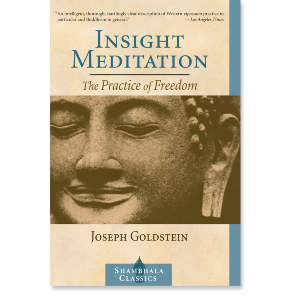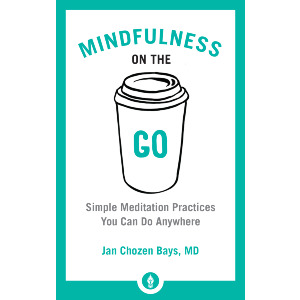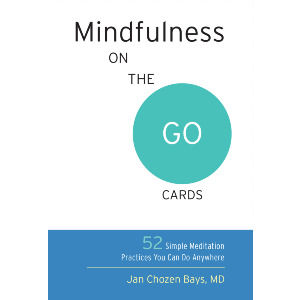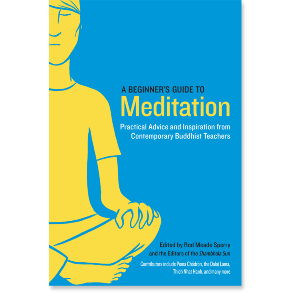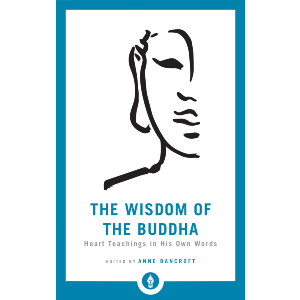

Joseph Goldstein
Joseph Goldstein has studied and practiced meditation since 1967 and is a cofounder of the Insight Meditation Society and the Barre Center for Buddhist Studies in Barre, Massachusetts. He is the author of many books, including Mindfulness: A Practical Guide to Awakening and One Dharma: The Emerging Western Buddhism, and he has coauthored books with Sharon Salzberg and Jack Kornfield. He continues to lead Insight Meditation retreats around the world.
Joseph Goldstein
-
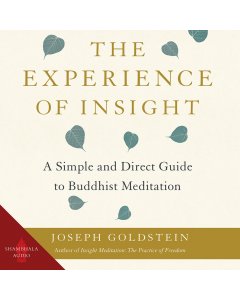
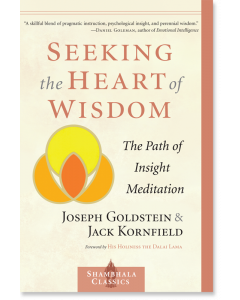 Seeking the Heart of Wisdom$18.95- Paperback
Seeking the Heart of Wisdom$18.95- PaperbackBy Joseph Goldstein
By Jack Kornfield
Foreword by H.H. the Fourteenth Dalai Lamaper page
GUIDES
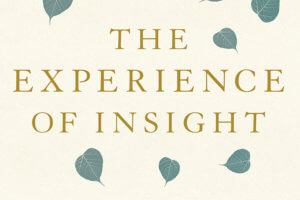
Excerpt from The Experience of Insight
We have all begun a journey. A journey into our minds. A journey of discovery and exploration of who and what we are. Taking the first step is difficult, and in the first days of practice there is often restlessness or sleepiness, some boredom, laziness, doubt, and perhaps regret about getting involved at all. The first step is difficult for everyone. Spinoza, at the end of one of his important philosophical works, wrote, “All noble things are as difficult as they are rare.” The spiritual quest we are embarking upon is a rare and precious undertaking, so be gentle yet persevering through any beginning difficulties.
A beautiful allegory for this journey is the book Mount Analogue. The story is of a group of people searching for a mountain. The base of the mountain is on the earth while the summit represents the highest possible spiritual attainment. Initially, the pilgrims are faced with a great obstacle: under ordinary circumstances the mountain is invisible, and considerable struggle and hardship is undergone just to locate it. After much effort, they find the mountain and are able to approach its base. The rest of the book describes all the preparations, difficulties, struggles, and excitement of beginning the ascent to the top.
We’re on this very same journey, ascending the mountain of spiritual insight. We have already discovered the secret of its invisibility: the fact that the truth, the law, the Dharma, is within us, not outside of ourselves, and that we begin from where we are.
The path up the mountain, the path to freedom, has been well mapped by the many people who have walked upon it. One of the clearest of these descriptions is found in the teachings of the Buddha, expressed as the noble eightfold path. It is a map, and a guide pointing the way to enlightenment.
All noble things are as difficult as they are rare.
The first step of this path up the mountain is right understanding. It is, in fact, both the first step and the last. It is because of some degree of understanding we begin the journey in the first place; and that understanding is brought to completion, to perfection, at the summit when we penetrate to the very deepest levels of our mind. In the beginning, right understanding deals with certain natural laws that govern our everyday lives. One of the most important of these is the law of karma, the law of cause and effect. Every action brings a certain result. Things are not happening to us by chance or accident. Whenever we act motivated by greed, hatred, or delusion, pain and suffering come back to us. When our actions are motivated by generosity, love, or wisdom, the results are happiness and peace. If we integrate this understanding of the law of karma into our lives, we can begin more consciously to cultivate and develop wholesome states of mind.
The Buddha often stressed the power and importance of generosity. Giving is the expression in action of non-greed in the mind. The whole spiritual path involves letting go, not grasping, not clinging, and generosity is the manifestation of that non-attachment.
Another part of right understanding is acknowledging the special relationship, the unique karma, we have with our parents, and the responsibilities and obligations we have to them. Our parents cared for us when we were unable to care for ourselves, and it is due to their concern at a time when we were helpless that we now have the opportunity to practice the Dharma. The Buddha said that there is no way of repaying this debt, that we could carry our parents about on our shoulders for an entire lifetime and still we would not have fulfilled our obligation. The only way of repaying our parents is to help establish them in the Dharma, in the truth, in right understanding. Generally, we spend a great deal of time and energy freeing ourselves psychologically from our parents, which certainly has its value, but in that space of freedom, we should recognize our responsibility toward them.
Right understanding also involves a profound and subtle knowledge of our true nature. In the course of meditation practice it becomes increasingly clear that everything is impermanent. All the elements of mind and body exist in a moment and pass away, arising and vanishing continuously. The breath comes in and goes out, thoughts arise and pass away, sensations come into being and vanish. All phenomena are in constant flux. There is no lasting security to be had in this flow of impermanence. And deep insight into the selfless nature of all elements begins to offer a radically different perspective on our lives and the world. The mind stops grasping and clinging when the microscopic transience of everything is realized, and when we experience the process of mind and body without the burden of self. This is the kind of right understanding that is developed in meditation through careful and penetrating observation.
When our actions are motivated by generosity, love, or wisdom, the results are happiness and peace.
The second step of the eightfold path is right thought. This means thoughts free of sense desire, free of ill will, free of cruelty. As long as the mind is attached to sense desire, it will seek after external objects, external fulfillments that, because of their impermanent nature, cannot be finally satisfying. There is a momentary experience of pleasure and then craving returns for more. The endless cycle of desire for sense pleasures keeps the mind in turbulence and confusion. Freeing thought from sense desires does not mean suppressing them and pretending they are not there. If a desire is suppressed, it will usually manifest in some other way. Equally unskillful is identifying with each desire as it arises and compulsively acting on it. Right thought means becoming aware of sense desires and letting them go. The more we let go, the lighter the mind becomes. Then there is no disturbance, no tension, and we begin to free ourselves from our storehouse of conditioning, from our bondage to sense desires.
Freedom from ill will means freedom from anger. Anger is a burning in the mind, and when expressed causes great suffering to others as well. It is helpful to be able to recognize anger and to let it go. Then the mind becomes light and easy, expressing its natural lovingkindness.
Thoughts free of cruelty mean thoughts of compassion, feeling for the suffering of others and wanting to alleviate it. We should develop thoughts that are completely free of cruelty toward any living thing.
The next steps on the path up the mountain have to do with how we relate in the world; how we relate to our environment, to other people. They are a prescription for putting us into harmony with our surroundings, for establishing a proper ecology of mind so that we’re not in discord with others or with nature around us. The first aspect of relating to the world in this way is right speech. Right speech means not speaking what is untrue, or using slanderous, abusive, or harsh language; rather, speaking words that are honest and helpful, creating a vibration of peace and harmony.
There is a story told of the Buddha returning after his enlightenment to the city where his family was still living. Many relatives and friends, inspired by his presence, by his love and compassion and wisdom, joined the order of monks. At that time, Rahula, his son, also became a novice in the order. There is one famous discourse called Advice to Rahula in which the Buddha, speaking to his son, said that under no circumstances, either for his own benefit or for the benefit of others, should he speak that which is untrue. So important is the commitment to truth. It makes our relationships easy and uncomplicated. Honesty in speech also reflects back to honesty with ourselves. There are many things in our mind and body, tensions of all kinds, unpleasantness, things we don’t like to look at, things about which we’re untruthful with ourselves. Truthfulness in speech becomes the basis for being honest in our own minds, and that is when things begin to open up. We then begin to see clearly, working through all the neuroses of mind.
The mind stops grasping and clinging when the microscopic transience of everything is realized, and when we experience the process of mind and body without the burden of self.
The fourth step of the path up the mountain is right action. This means not killing, minimizing the amount of pain we inflict on other beings; not stealing, that is, not taking what isn’t given; and not committing sexual misconduct, which in the context of our daily life can be most basically understood as not causing suffering to others out of greed or desire for pleasant sensations.
Often, we are unaware in the moment of the long-range effects of our actions. There is a story from Mount Analogue that illustrates this.
There was a rule for people who were climbing the mountain that above a certain point no living things were to be killed. The climbers had to carry all their food. One day someone who was walking on the mountain above that point was caught in a violent snowstorm. For three days he lived in a makeshift shelter with no food in near freezing conditions. On the third day the blizzard ended. He saw a very old rat crawling out of a hole and thought there would be no harm in killing the rat so that he could feed himself and get down the mountain. Somehow he managed to get a stone and kill the rat. He made it down the mountain and did not think any more about it. Some time later he was called before the tribunal of guides, people responsible for the mountain and the path. He was called to account for the killing of the rat, an event which by this time he had forgotten. It seems there had been serious consequences. The rat, being very old, was not strong enough to catch the healthy insects, and fed on the diseased insect population. So when the rat was killed there was no natural check on the diseased insects. Disease spread throughout the whole species and they died off. The insects had been responsible for pollinating and fertilizing much of the plant growth on the mountainside. When the insects died off, without this fertilization the vegetation started to diminish. The plant life had been holding the soil in place and when the vegetation began to die the soil started to erode. Eventually, there was a great landslide which killed many people who were climbing up the mountain and blocked the path for a long time. All of this the outcome of the seemingly insignificant act of killing the old rat.
Because we’re not always able to see the far-reaching consequences of each of our acts, we should take care not to create disturbances in the environment but to emanate peacefulness and gentleness, love and compassion.
The next step of the eightfold path involving our relationships in the world is right livelihood. This means doing that kind of work for support and maintenance that is not harmful to others; not having work that involves killing, stealing, or dishonesty. There is a traditional list of occupations that are unskillful, such as dealing in weapons or intoxicants, hunting or fishing, all causing suffering to others. The Dharma is not just sitting. Sitting is a powerful tool for understanding, but wisdom and understanding have to be integrated into our lives. Right livelihood is an important part of the integration: “To walk in a sacred manner as was the American Indian way. To make an art of life.” To do what we do in a sacred manner. To do what we do with awareness.
The next three steps on the path have to do primarily with the practice of meditation. The first of these is in many respects the most important: right effort. Unless we make the effort, nothing happens. It is said in the Abhidharma, the Buddhist psychology, that effort is the root of all achievement, the foundation of all attainment. If we want to get to the top of the mountain and just sit at the bottom thinking about it, it’s not going to happen. It is through the effort, the actual climbing of the mountain, the taking of one step after another, that the summit is reached. Ramana Maharshi, a great sage of modern India, wrote, “No one succeeds without effort. Mind control is not your birthright. Those who succeed owe their success to their perseverance.” But effort has to be balanced. Being very tense and anxious is a great hindrance. Energy has to be balanced with tranquility. It is as if you are trying to tune the strings on a guitar. If they are too tight or too loose, the sound is not right. In our practice also, we have to be persistent and persevering but with a relaxed and balanced mind, making the effort without forcing. There is so much to discover in ourselves, so many levels of mind to understand. By making effort, the path unfolds. No one is going to do it for us. No one can enlighten another being. The Buddha’s enlightenment solved his problem, it didn’t solve ours . . . except to point out the way. We each have to walk the path for ourselves.
Because we’re not always able to see the far-reaching consequences of each of our acts, we should take care not to create disturbances in the environment but to emanate peacefulness and gentleness, love and compassion.
Mindfulness is the seventh step in this noble eightfold path, and it means being aware of what is happening in the present moment. It means noticing the flow of things: when walking, to be aware of the movement of the body; in observing the breath, to be aware of the sensations of the in-out or rising-falling; to notice thoughts or feelings as they arise. As expressed by one Zen master, “When you walk, walk; when you run, run; above all, don’t wobble.” Whatever the object is, to notice it, to be aware of it, without grasping, which is greed, without condemning, which is hatred, without forgetting, which is delusion; just observing the flow, observing the process. When mindfulness is cultivated it becomes very rhythmic and the whole day becomes a dance. Mindfulness brings the qualities of poise, equilibrium, and balance to the mind, keeping it sharply focused, with the attitude of sitting back and watching the passing show.
The last step on the path up the mountain is right concentration. This is one-pointedness of mind, the ability of the mind to stay steady on an object. The first days of this journey may seem difficult because concentration is not yet well developed. To climb a mountain, you need a certain physical strength. If you are not yet very strong, in the beginning you will feel tired and uncomfortable. But as the body gets stronger, climbing becomes easier. It is the same in meditation. As concentration is developed, it becomes less difficult to stay in the moment. The hindrances that are faced in the beginning of practice are then easily overcome.
If you put a kettle on the stove and every few minutes take the lid off, it will take a longer time for the water to boil. If you put the kettle on the stove and leave it there, the water will heat up very quickly.
A meditation retreat is a unique opportunity to develop a high degree of concentration and mindfulness. By being continuous in the practice, each moment builds on the one before, and in a short time the mind develops an acute strength and penetrating power.
The journey that we are on combines right relationship in the world with a deepening understanding and insight into our own nature. There is appropriate advice in Mount Analogue about ascending this path of wisdom: “Keep your eye fixed on the path to the top. But don’t forget to look right in front of you. The last step depends upon the first. Don’t think that you’re there just because you see the summit. Watch your footing. Be sure of the next step. But don’t let that distract you from the highest goal. The first step depends upon the last.”
Being grounded in the present, cultivating awareness of the moment, and trusting our vision of freedom.
Share
Related Books

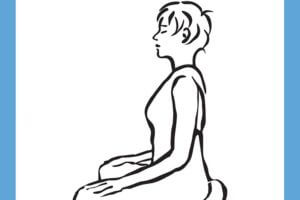
Strengthening Mindfulness | An Exercise from The Path of Insight Meditation
Three Mindfulness Exercises
1. Daily sitting log.
Here is a way to strengthen daily practice and to see its cycles more clearly. For one month or two, keep a small notebook at the place where you sit. Each day note down how long you sit. Then note down in one sentence the general qualities of the sitting such as “sleepy” or “restless and disturbed” or “calm and light” or “filled with many plans” or “easily centered on the breath,” or whatever you notice. Then in another sentence or two note the general qualities of your day such as “happy” or “relaxed and spacious” or “overworked and tense” or “frustrated and anxious.” At the end of a month or two, review your notes and be aware of the cycles in your daily sitting practice and how they may reflect and be connected to your daily life. Particularly become aware of areas where you may be stuck and those which call for greater mindfulness and acceptance.
2. Reminders to pay attention: Developing the habit of wakefulness.
This exercise lasts one month. At the beginning of each week choose a simple regular activity of your life that you usually do unconsciously, on automatic pilot. Resolve to make that particular activity a reminder, a place to wake up your mindfulness. For example, you might choose making tea, shaving, bathing, or perhaps the simple act of getting into the car. Resolve to pause for a couple of seconds before each time you begin the activity. Then do it with a gentle and full attention, as if it were the heart of a meditation retreat for you. As you go through the week, try to bring a careful mindfulness to that act each time it arises in your life. Even the simplest acts can be a powerful reminder and bring a sense of presence and grace. If you choose the opening of doors throughout the day, you can open each door as if the Buddha himself were to pass through with you. If you choose the act of making tea or coffee, you can do it as if it were a gracious Japanese tea ceremony. At the end of the week add another activity, until by the end of the month you have included four new areas of your life into daily mindfulness. Then, if you wish, continue this exercise for a second and third month, bringing the power of attention into more and more of each day.
3. Choosing a life of voluntary simplicity.
Do this exercise after a day or more of meditative sitting or after a day or more spent removed from civilization in nature. Sit and allow yourself to become calm and silent. Then, in a simple way, review your current life. Bring to mind each of several major areas including your schedule, your finances and work, your relationships or family life, your home, your leisure activities, your possessions, your goals, and your spiritual life. As each area comes to mind, ask yourself the question: What would it be like to greatly simplify this area of my life? Continue to sit quietly and reflect, letting the images or answers arise for each area about which you ask. Then, after reflecting in this way, again bring to mind each area and ask a second question: If it became simpler, would I be happy?
The purpose of spiritual life is to discover freedom, to live in harmony with the world around us and our own true nature. To do so brings happiness and contentment. If any aspect of your life shows a need for simplification and if the way for this simplification shows itself to you, keep it in mind and begin the process of mindful change.
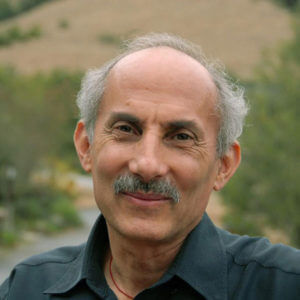


Conscious Conduct | An Excerpt from The Path of Insight Meditation
The Five Training Precepts
The First Aspect: Conscious Conduct or Virtue
The first aspect, conscious conduct or virtue, means acting harmoniously and with care toward the life around us. For spiritual practice to develop, it is absolutely essential that we establish a basis of moral conduct in our lives. If we are engaged in actions that cause pain and conflict to ourselves and others, it is impossible for the mind to become settled, collected, and focused in meditation; it is impossible for the heart to open. To a mind grounded in unselfishness and truth, concentration and wisdom develop easily.
For spiritual practice to develop, it is absolutely essential that we establish a basis of moral conduct in our lives. If we are engaged in actions that cause pain and conflict to ourselves and others, it is impossible for the mind to become settled, collected, and focused in meditation; it is impossible for the heart to open.
The Buddha outlined five areas of basic morality that lead to a conscious life. These training precepts are given to all students who wish to follow the path of mindfulness. They are not given as absolute commandments; rather, they are practical guidelines to help us live in a more harmonious way and develop peace and power of mind. As we work with them, we discover that they are universal precepts that apply to any culture, in any time. They are a part of basic mindfulness practice and can be cultivated in our spiritual life.
The First Precept
The first precept is to refrain from killing. It means honoring all life, not acting out of hatred or aversion in such a way as to cause harm to any living creature. We work to develop a reverence and caring for life in all its forms. In the Eightfold Path this is called one aspect of right action.
Even though it sounds obvious, we still manage to forget it. There was a cartoon in the New Yorker magazine some years ago during the hunting season. One deer turns to the other and says, “Why don’t they thin their own goddamn herds?” We get into formulating excuses: “Well, there are too many deer.” As we become more conscious and connected with life, it becomes clear that we shouldn’t harm others, because it hurts us to kill. And they don’t like it; even the tiniest creatures don’t wish to die. So in practicing this precept we learn to stop creating pain for others and pain for ourselves.
The Second Precept
The second precept asks us to refrain from stealing, meaning not to take what is not ours. Not to steal is called basic nonharming. We need to let go of being greedy and not take too much. More positively, it means to use things with sensitivity and care, to develop our sense of sharing this life, this planet. To live, we need plants, we need animals, and we need insects. This whole world has to share its resources. It is a boat of a certain size with so many beings living on it. We’re connected with the bees and the insects and the earthworms. If there weren’t earthworms to aerate the soil, and if there weren’t bees to pollinate the crops, we’d starve. We need bees, we need insects. We’re all interwoven. If we can learn to love the earth, we can be happy whatever we do, with a happiness born of contentment. This is the source of genuine ecology. It’s a source of world peace, when we see that we’re not separate from the earth but that we all come out of it and are connected with one another. From this sense of connectedness we can commit ourselves to share, to live a life of helpfulness and generosity for the world. To cultivate generosity directly is another fundamental part of living a spiritual life. Like the training precepts and like our inner meditations, generosity can actually be practiced. With practice, its spirit forms our actions, and our hearts will grow stronger and lighter. It can lead us to new levels of letting go and great happiness. The Buddha emphasized the importance of generosity when he said, “If you knew what I know about the power of giving, you would not let a single meal pass without sharing it in some way.”
If we can learn to love the earth, we can be happy whatever we do, with a happiness born of contentment. This is the source of genuine ecology. It’s a source of world peace, when we see that we’re not separate from the earth but that we all come out of it and are connected with one another.
Traditionally there are described three kinds of giving, and we are encouraged to begin developing generosity at whatever level we find it arising in our heart. At first we find tentative giving. This is where we take an object and think, “Well, I’m probably not going to use this anyway. Maybe I should give it away. No, I should save it for next year. No, I’ll give it away.” Even this level is positive. It creates some joy for us and it helps someone else. It’s a sharing and a connecting.
The next level of generosity to discover is friendly giving. It’s like relating to a brother or sister. “Please share what I have; enjoy this as I do.” Sharing openly of our time, our energy, the things we have, feels even better. It’s lovely to do. The fact is that we do not need a lot of possessions to be happy. It is our relationship to this changing life that determines our happiness or sorrow. Happiness comes from the heart.
The third level of giving is kingly or queenly giving. It’s where we take something—our time or our energy or an object that is the best we have—and give it to someone happily and say, “Please, would you enjoy this too.” We give to the other person and take our joy in that sharing. This level of giving is a beautiful thing to learn.
As we start to learn to be more generous, to give more of our time, our energy, our goods, our money, we can find a way to do it not just to fit a self-image or please an external authority, but because it is a source of genuine happiness in our lives. Of course this doesn’t mean giving everything away. That would be excessive, because we have to be compassionate and care for ourselves as well. Yet to understand the power of practicing this kind of openness is very special. It is a privilege to be able to bring this generosity into our lives.
As we start to learn to be more generous, to give more of our time, our energy, our goods, our money, we can find a way to do it not just to fit a self-image or please an external authority, but because it is a source of genuine happiness in our lives.
The Third Precept
The third precept of conscious conduct is to refrain from false speech. The Eightfold Path calls this right speech. Don’t lie, it says. Speak only what is true and useful; speak wisely, responsibly, and appropriately. Right speech really poses a question. It asks us to be aware of how we actually use the energy of our words. We spend so much of our lives talking and analyzing and discussing and gossiping and planning. Most of this talk is not very conscious or aware. It is possible to use speech to become awake. We can be mindful of what we are doing when we speak, of what the motivation is and how we are feeling. We can also be mindful in listening. We can align our speech to the principles of what is truthful and what is most kind or helpful. In practicing mindfulness we can begin to understand and discover the power of speech.
Once a master was called to heal a sick child with a few words of prayer. A skeptic in the crowd observed it all and expressed doubts about such a superficial way of healing. The master turned to him and said, “You know nothing of these matters; you are an ignorant fool!” The skeptic became very upset. He turned red and shook with anger. Before he could gather himself to reply, however, the master spoke again, asking, “When one word has the power to make you hot and angry, why should not another word have the power to heal?”
Our speech is powerful. It can be destructive and enlightening, idle gossip or compassionate communication. We are asked to be mindful and let our speech come from the heart. When we speak what is true and helpful, people are attracted to us. To be mindful and honest makes our minds quieter and more open, our hearts happier and more peaceful.
The Fourth Precept
The fourth precept, to refrain from sexual misconduct, reminds us not to act out of sexual desire in such a way as to cause harm to another. It requires that we be responsible and honest in sexual relations. Sexual energy is very powerful. In these times of rapidly changing relationships and sexual values, we are asked to become conscious of our use of this power. If we associate this energy in our lives with grasping and greed, exploitation and compulsion, we will perform actions that bring harm to ourselves and others, such as adultery. There is great suffering consequent to these actions and great joy in the simplicity that comes in their absence.
The spirit of this precept asks us to look at the motivation behind our actions. To pay attention in this way allows us (as lay people) to discover how sexuality can be connected to the heart and how it can be an expression of love, caring, and genuine intimacy. We have almost all been fools at some time in our sexual life, and we have also used sex to try to touch what is beautiful, to touch another person deeply. Conscious sexuality is an essential part of living a mindful life.
To refrain from the heedless use of intoxicants is the fifth precept. It means to avoid taking intoxicants to the point of making the mind cloudy and to devote our lives instead to developing clarity and alertness. We have just one mind, so we must take care of it. In our country there are millions of alcoholics and others who have abused drugs. Their unconsciousness and fearful use of intoxicants has caused great pain to themselves, their families, and all those they touch. To live consciously is not easy—it means we often must face fears and pains that challenge our hearts. Abuse of intoxicants is clearly not the way.
To enter the human realm, to establish a ground for spiritual life, requires that we bring awareness to all the actions in our world, to our use of intoxicants, our speech, to all of our actions. Establishing a virtuous and harmonious relationship to the world brings ease and lightness to the heart and steadfast clarity to the mind. A foundation of virtue brings great happiness and liberation in itself and is the precondition for wise meditation. With it we can be conscious and not waste the extraordinary opportunity of a human birth, the opportunity to grow in compassion and true understanding in our life.
Establishing a virtuous and harmonious relationship to the world brings ease and lightness to the heart and steadfast clarity to the mind. A foundation of virtue brings great happiness and liberation in itself and is the precondition for wise meditation.
This has been excerpted from The Path of Insight Meditation.



